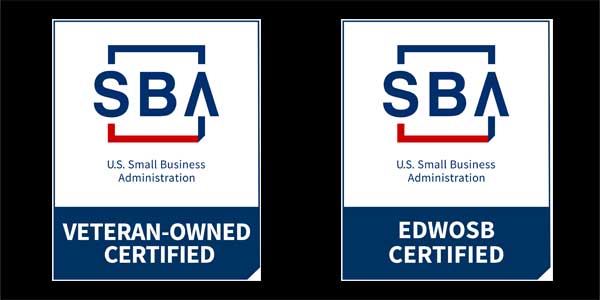Why is Traditional Training Ineffective?
Enjoy the video and read along with the exact transcript below:
David Cleverdon (CTO – 360immersive):
How do you get, how do you get engagement up? How do you get people excited about training?
[00:00:16] Have you been wondering why traditional training is becoming more ineffective as time goes on? Hi, I’m Jenny Q and I’m with David Cleverdon and we are going to talk about just that. Hi, David. Jenny. It is great to be here with you today. Well, I’m excited to have you here because I know this is a total passion of yours and has been for some time.
[00:00:39] Let’s talk about why is traditional training ineffective? Well, if you think about it, training has changed over the decades and certainly more so in the last five years than any other time, and training today is more about what I like to call “check the box” or it’s “one and done.” And what I mean by that is that we’re so focused on the, not the outcome, which means do the trainees receive the information?
[00:01:16] Did they retain the information? Do they act on the information? What were they focused on? Did they take the course? Did they pass the course? Nothing to do with: did they retain, are they safer or are they, do they have a better work environment? And with the advent of online courses, and we know that online courses are becoming a much more efficient way to train, but are we actually doing a better job of training when we go to that format?
[00:01:50] Right. Well, let me ask you real quick. Why are we spending tremendous amounts of money on training for effectively very little results? Good question. And I wish I had the answer, but I think we could make some small changes in our training strategy and it really has to do with new technologies coming onto the marketplace.
[00:02:12] How do you get engagement up? How do you get people excited about training? So they’re not just checking the box. They’re not just saying I’m done with the course. I’m moving on and until my next refresher. Yeah. And so you’ve mentioned online courses. What are the downsides of online courses?
[00:02:32] I think we all know what the downsides are is, are mostly, they’re just graphics or they’re images or they’re text. And we’re texting on our phone, you know, we’re kind of paying attention, but we’re doing something over here and we’re self-paced. We’re doing it at home. We’re doing in the training room, we’re doing it in our office, but the engagement level is so low that yes, we can get through the course.
[00:03:02] And yes, we can answer the questions at that point in time. Now it brings up another point. [What’s that?] It is that there is a whole body of scientific evidence. In fact, they call it the forgetting curve – I can understand a body of information at this point 100%, but you take me a day, a day and a half, two days, and suddenly I’m down to
[00:03:34] 30% or 20% without that kind of engagement to get that attention and retention. And so, if you pile all of the evidence together, we’re spending a lot of money. But we still have accident rates going up in certain industries. We have fatalities going up in certain industries.
[00:04:04] What are we gaining? And that’s because we’re paying attention to the wrong thing. We’re not paying attention to retention, to learning, to acting on that information. We’re paying attention to, Did they get the course done. And so with the check, the box, the cost then goes up because you’re paying for the training and you’re not getting the results that you were hoping to get for safety incidents in the workplace.
[00:04:29] That’s right. Yeah. Okay. Very good. So, how does VR training address the challenges? It’s all about engagement. OIf I can take the whole body of training content, whatever the topic might be. And weave in specific two to five-minute VR training modules. That the person can’t be not engaged because they’re in the environment.
[00:04:58] It’s like they’re in the room. They’re learning something. They’re actually doing it hands-on, but it’s virtual, and the differences is that suddenly they’ve woken up. They’ve gotten excited again. They’re ready to go. They’re ready to learn. They’re not just texting on their phone and going through it because they can’t be. Now a lot of content is using something like a VR Goggle here, but you can even use distribution through a normal PC and you’re panning and scanning through that virtual environment so that you don’t have to buy any additional hardware.
[00:05:38] All you have to do is implement those VR modules within your existing course. And it’s probably distributed through a safety management platform or LMS and, but you increase engagement. Okay. Okay. Very good. So VR training has been around for some time, but all of a sudden it’s becoming far more popular and more accessible to the masses.
[00:06:02] Why is that? – It’s affordable.
[00:06:06] VR training has been around since the 1980’s, 1990’s, even back into the 1960’s, in a rudimentary form, but it wasn’t until December of 2014, then it was for the common man for the common organization too, from a usability standpoint and more so from an affordability standpoint, when you’re looking for
[00:06:33] getting it into the hands of people that can actually use it. It has to be affordable. In fact, some of the newest platforms that in fact, one, a platform that we offer, which is called Train360 is extremely affordable because they’re very simple VR modules that are off the shelf. And if your people have had off the shelf training for a long time, but applying off the shelf concepts, and pricing structures to VR is new.
[00:07:07] And that’s the point. And you know, one thing that dawns on me is some of the Fortune 100 and Fortune 500 companies have been implementing VR training with huge results companies like, uh, like UPS and Kentucky Fried Chicken. And, uh, I’m sure you have more of these just off the top of your head, but what’s happening is what they’ve done is they’ve…
[00:07:32] You know, they have the budget, they can go ahead and create the custom content. But what about the small business to mid-sized businesses who need this training? And yet they can’t afford it. That’s what the off the shelf content addresses. Yeah. If I were to tell you that you could buy VR modules for OSHA 10, OSHA 30 like content for soft skills for compliance and, and they may cost you a few dollars versus tens of thousands or even more for large projects suddenly that is accessible to everyone.
[00:08:13] Right. In fact, we call it “VR for the Masses.” Yeah. When you, when you’re talking about virtual reality, that can be supplemented into an existing course so that you have that attention and retention component. It has to be inexpensive. Absolutely. And another trend that is happening as well is with the multigenerational workforce and because companies like UPS and Walmart and KFC, they’re using it.
[00:08:48] People are hearing it. And now the workforce is actually demanding it of their employers. So, you talk about retention, that’s retaining the information, but there’s also the retention of keeping your employees by offering them immersive and engaging training. That’s right. Retention is certainly retaining the information, but equally as important in some cases as retaining the employee.
[00:09:16] Right. So, and if you think about it, VR is an extremely visual form of presentation. So if somebody is maybe English, isn’t their first language, maybe they’re not really good at the written word, but they certainly understand concepts. They certainly understand if they’re down in a trench and they walk outside that trench box, the shielding that protects them and somebody that trench collapses.
[00:09:47] I mean, it’s a visceral feel. They understand that. They don’t have to understand anything else, except they were in danger. They made a mistake. There’s suffered a consequence and they learn from that mistake. Right? And so, then when they are in the actual environment, right, they’re going to remember that mistake that they made that made the avalanche happen and bury them alive.
[00:10:15] I guarantee you take a body of content and you sprinkle a couple of VR modules. If you go back to that same person a year later, the one thing that they will remember are the VR experiences, because they felt them. You, you don’t use the word “feel” when it comes to traditional content, a guy standing up in front of you.
[00:10:42] He’s got PowerPoint up there, unit. You’re not feeling it.
[00:10:47] If I’m in a VR headset, and something happens to me. I’m up on some scaffolding and I’m looking around and I realize I’m five stories, high. I mean, it’s a little scary. And suddenly that scaffolding starts to, to break away. I’m falling. It’s something I’m going to remember for a long time. And that’s the power.
[00:11:10] So good. Well, I know we’re just getting started on VR training in our, you know, world community. And so, it’s exciting to be on the forefront of that. David, thank you so much for sharing your thoughts. If people want more information from you, what’s the best way to find you? The best way to find us is at 360immersive.com.


